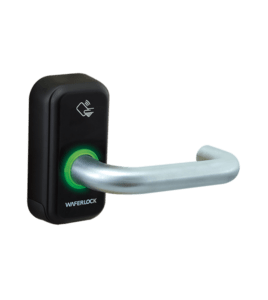WAFERLOCK Corp. was established in Taiwan in 2002 and specialises in electronic locks and access control systems. The company currently manufactures several product lines for the US, Japanese, European and Taiwanese markets.

The basic concept of Waferlock is Security&Simplicity. Waferlock products are reliable, but also easy to install and use. You can start using Waferlock locks by reading just a few lines of instructions.
Waferlock electronic locks are of high quality, confirmed by European and American certificates, and have an attractive price.
All this makes Waferlock electronic locks an attractive solution, especially for smaller systems.
WAFERLOCK designs and manufactures Smart Locks without involvement of any third-party contractors. Among many of the WFERLOCK’s accomplishments there is the first IP68 Smart Cylinder C760, the first IP68 Smart Lock L701 in the world and the first Facial Recognition Smart Lock L600 in Taiwan.
For European markets we offer smart European profile cylinders C761 and C760 and smart handles L700, L701 and L730-EU.
All our products have different European certificates.
All Waferock locks can operate in two modes:
Stand-alone mode: the units are programmed using a Master Card or Master Password. In this mode the unit can store up to 250 cards and one code (for C760 and L701 models). No event history is stored and access rights are not time limited.
Smartphone pairing mode: all settings are controlled via the specialized Waferkey application, accessible on both Android and iPhone devices. This mode provides owners with the ability to establish the validity period for access rights, monitor event history, and adjust specific settings beyond the standard functionality. Additionally, the device supports storage of up to 2000 access methods, including cards, codes, and application-based access.
Any MIFARE card can be used as a key, including contactless bank and transport cards.
In addition, in smartphone pairing mode, the locks can be opened with a phone (Bluetooth is used and the phone must have internet access).
Models that allow code entry can operate in two-factor authorisation mode, where the user must first present the card and then enter the code.

The battery typically lasts for around 1.5 years of regular use, assuming 10 openings per day at a temperature of +20 degrees Celsius. When the battery runs low, the locks issue a warning. If the battery becomes completely depleted, it can be replaced from outside the door. However, in smartphone pairing mode, after replacing the battery, the cards and codes will only resume functioning once the clock has been synchronized. To do this, users must connect to the locks via the app and verify the date and time on the device.









